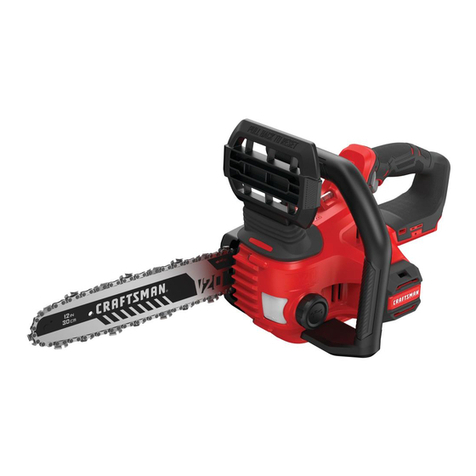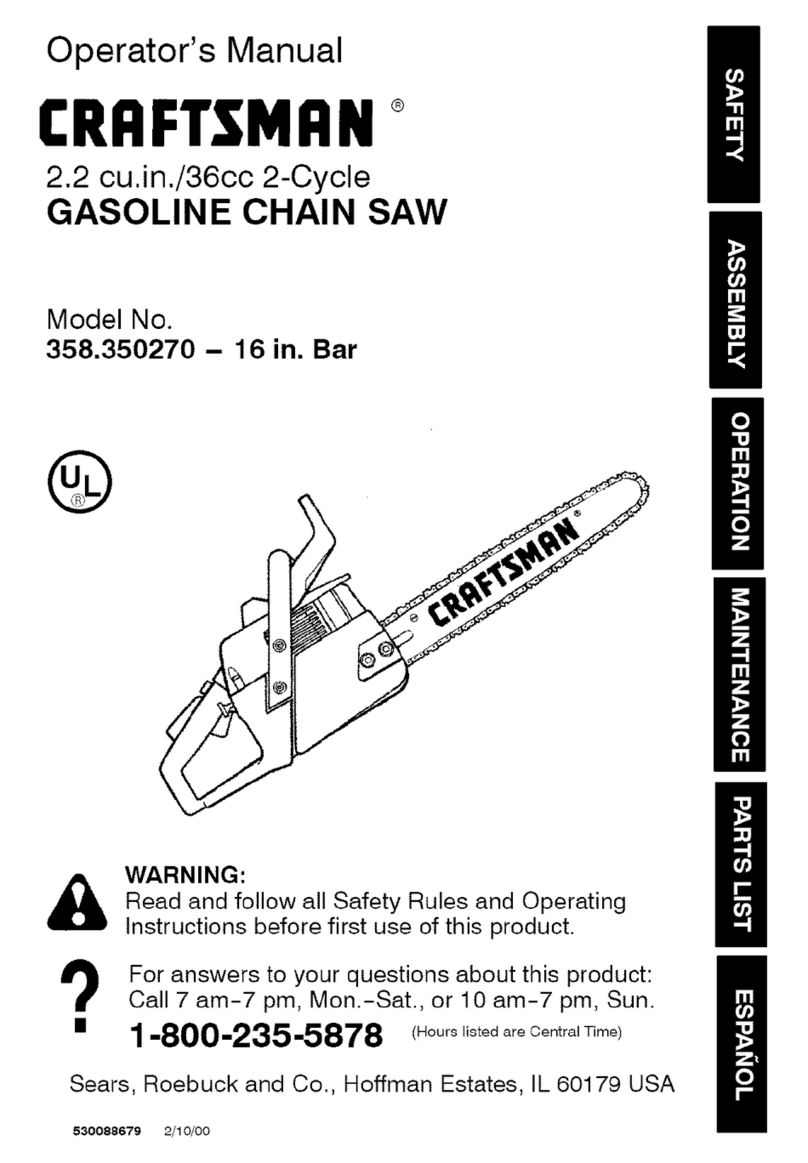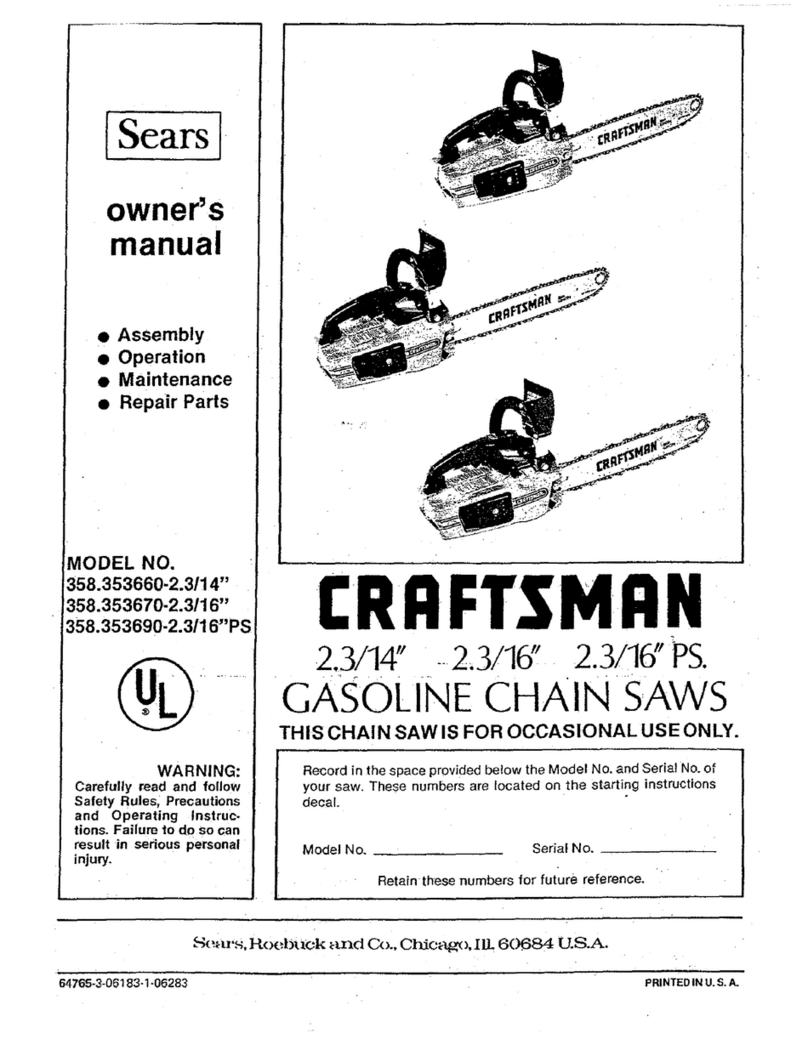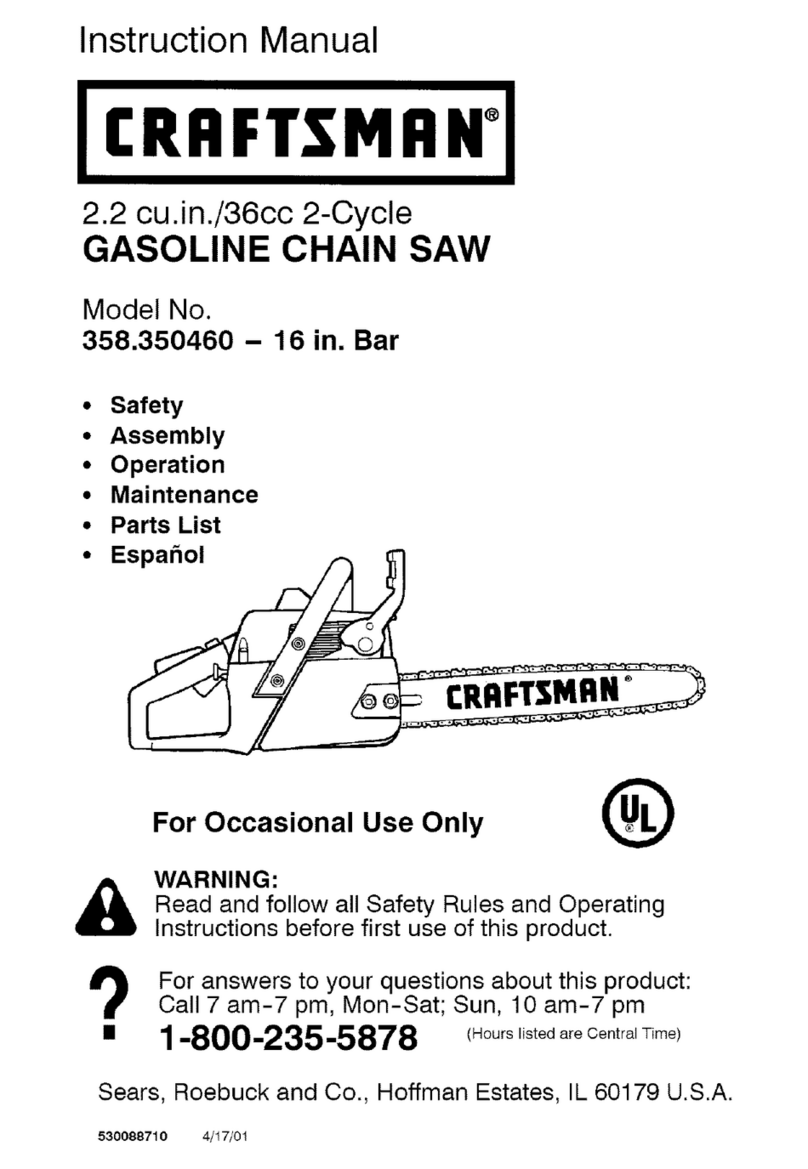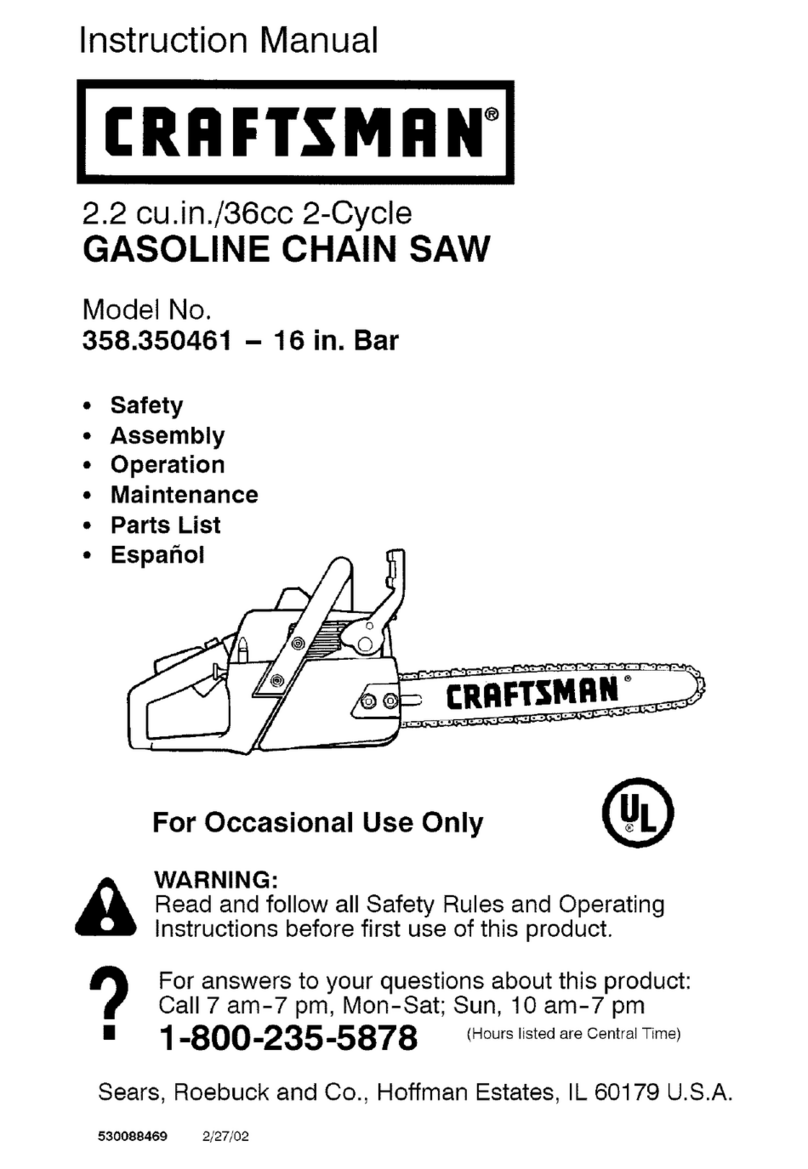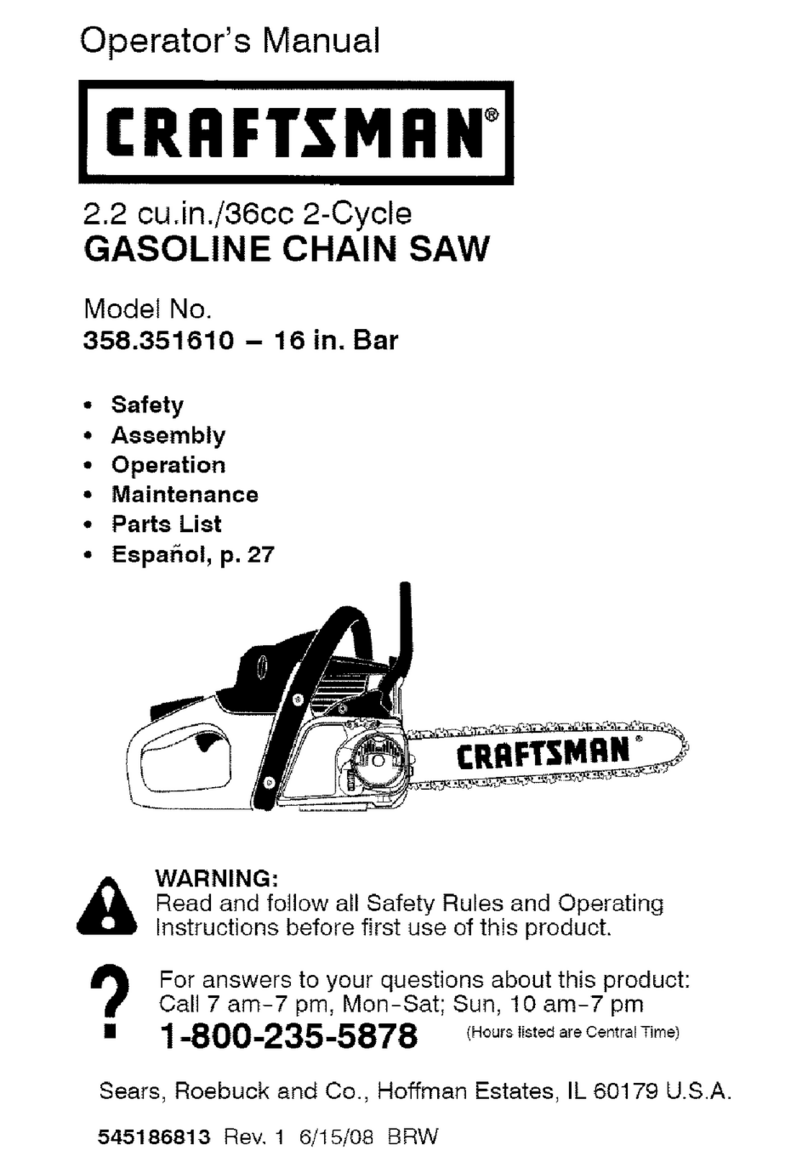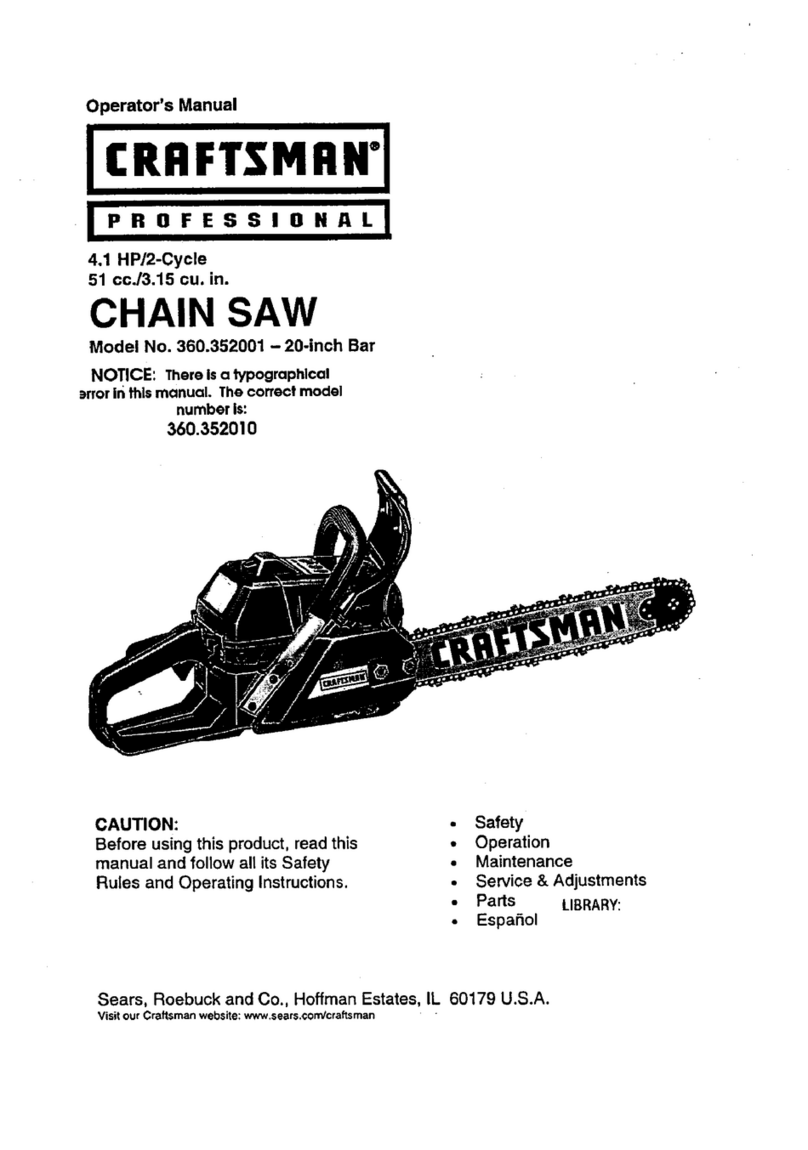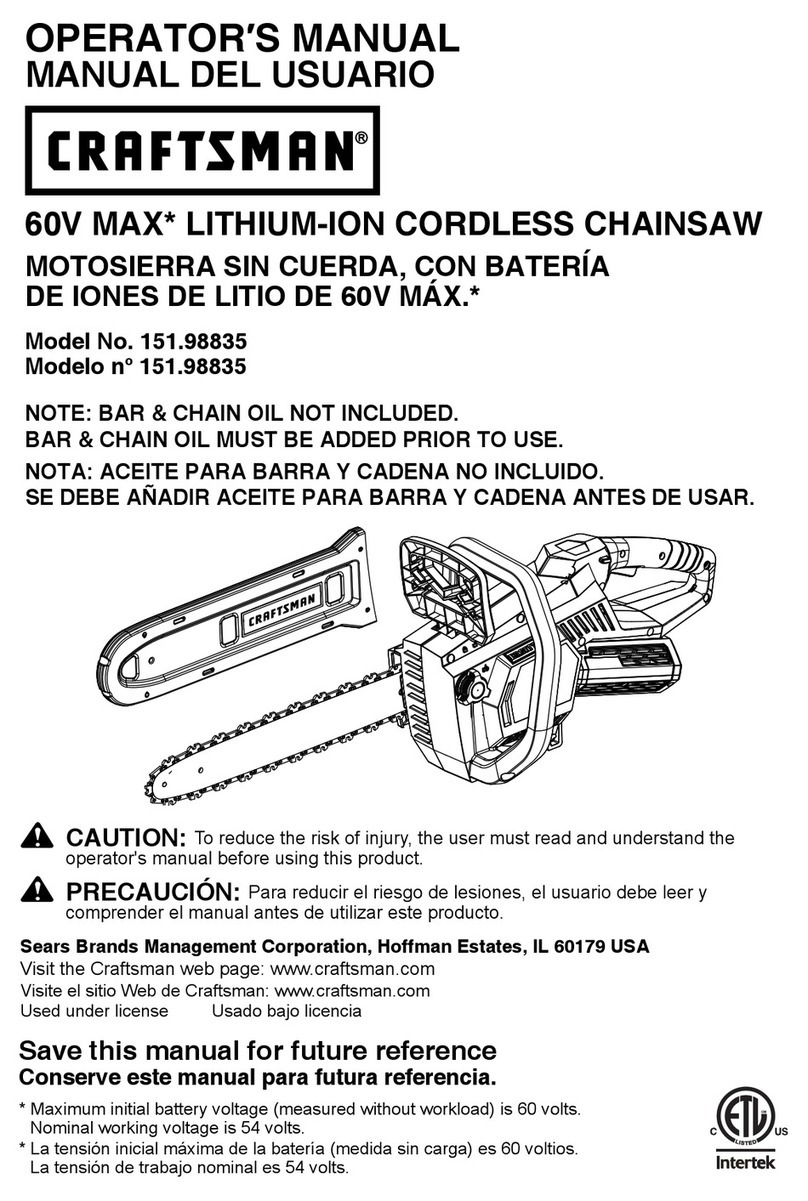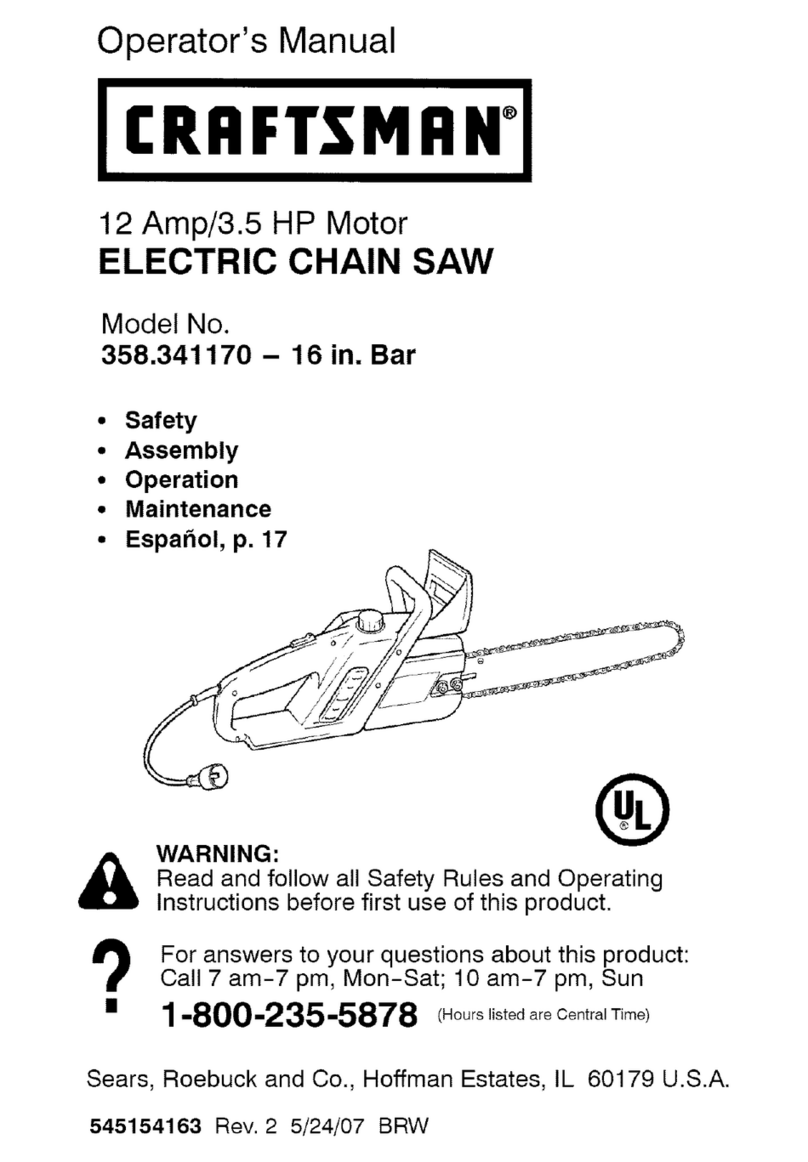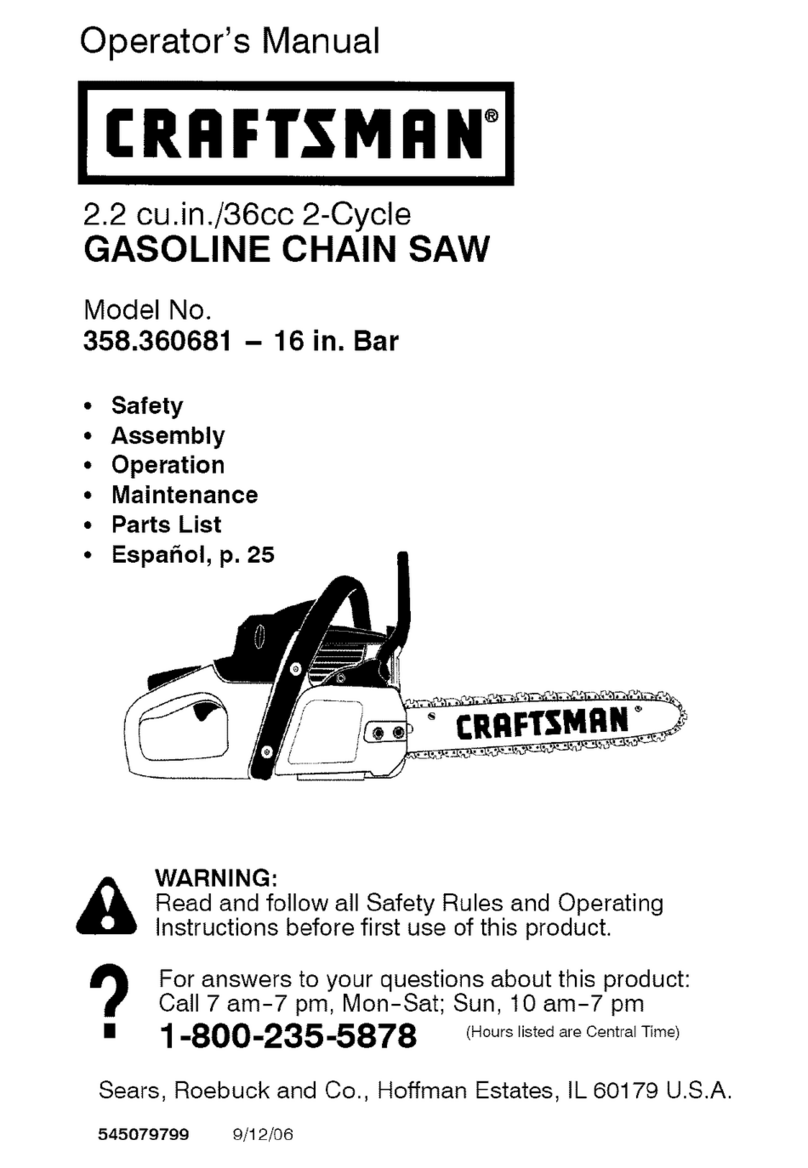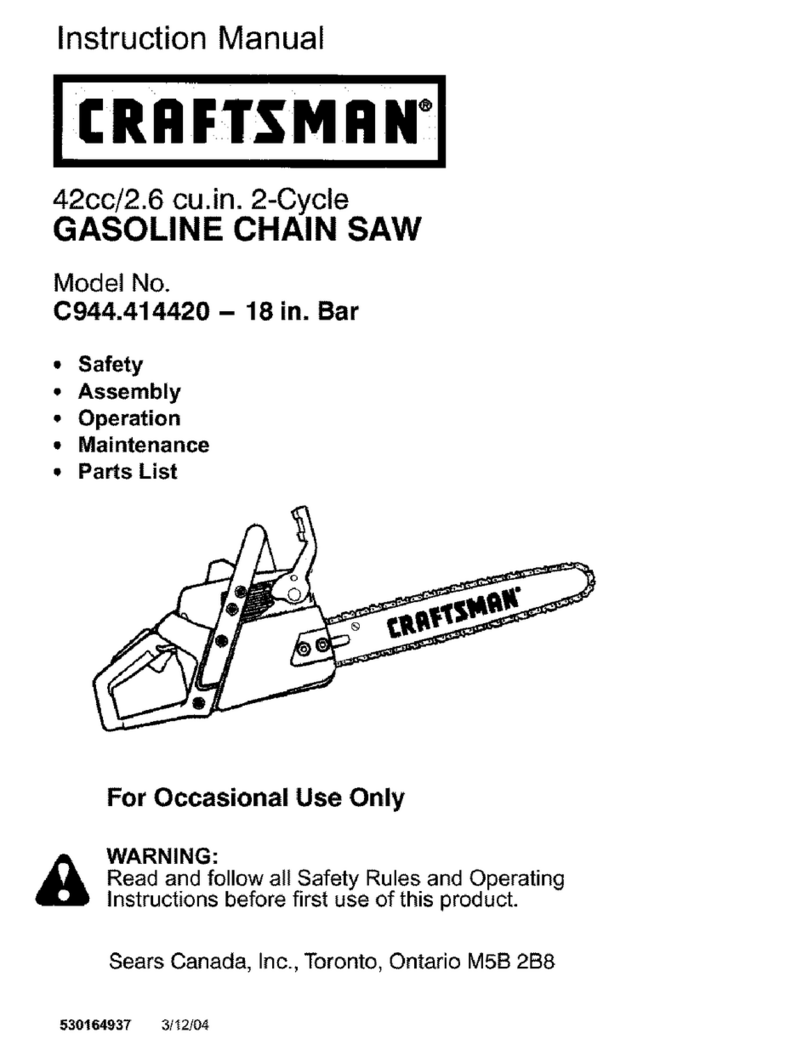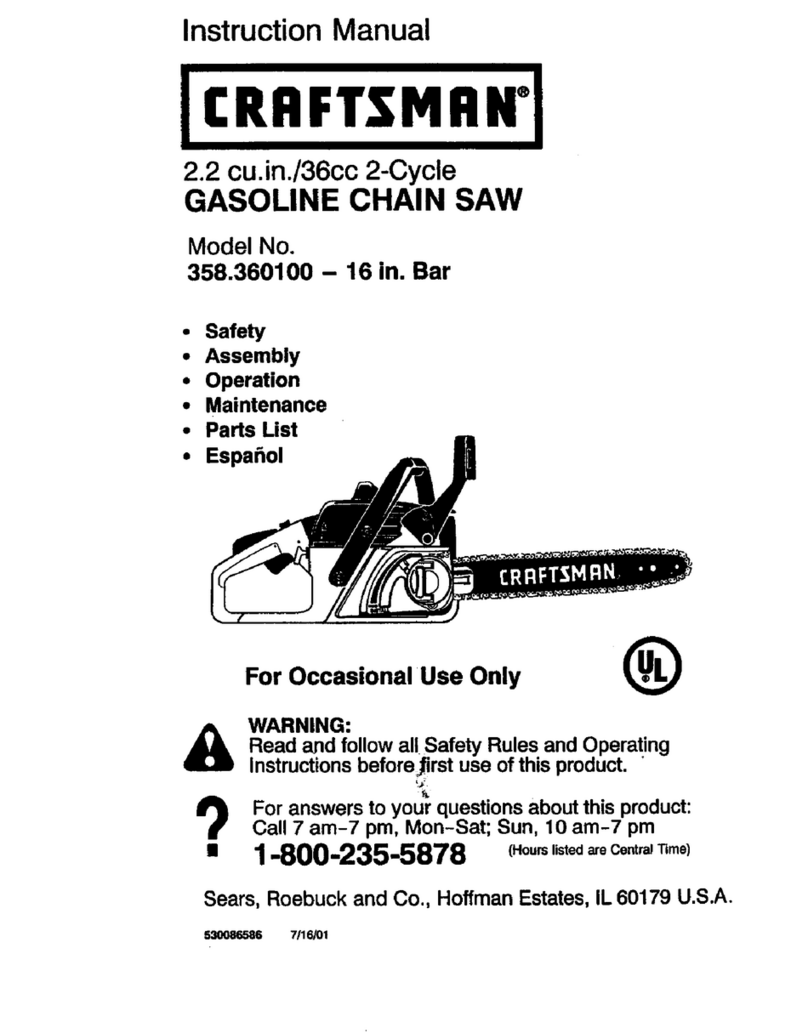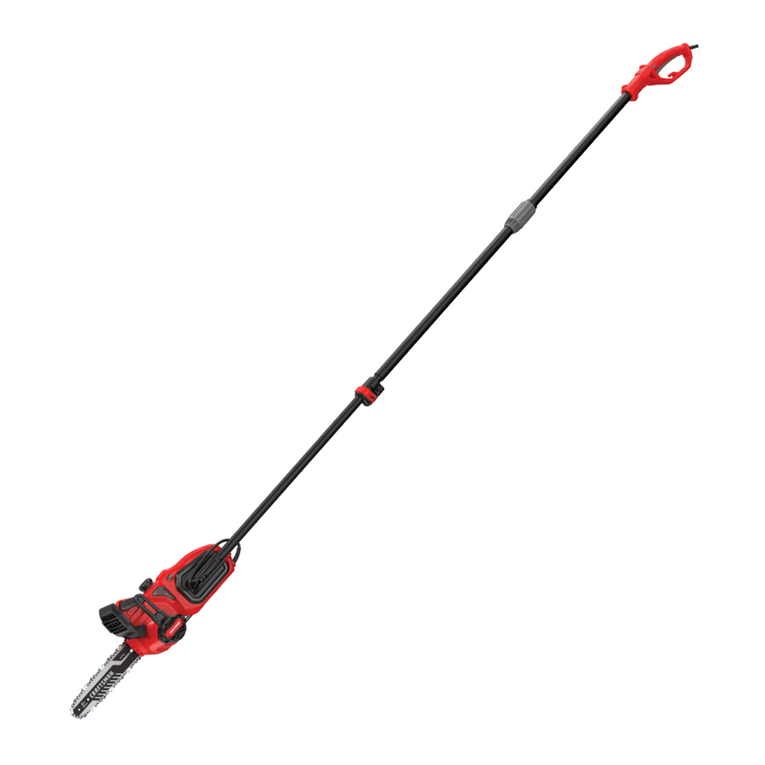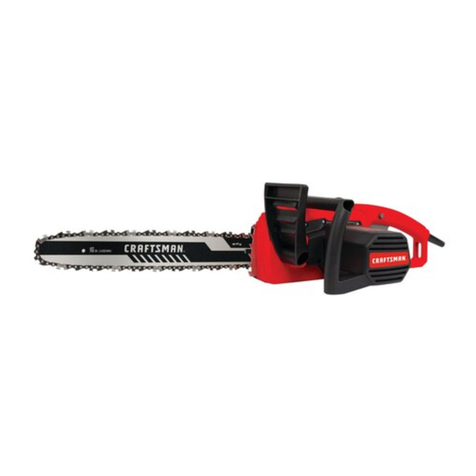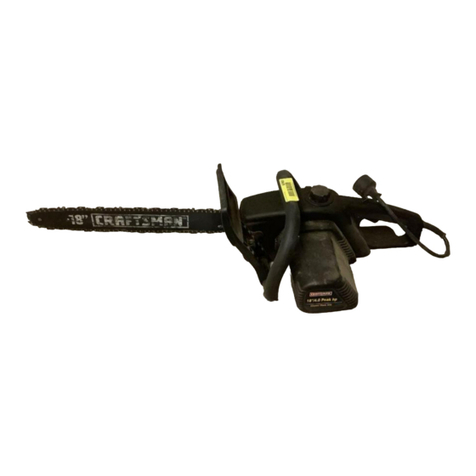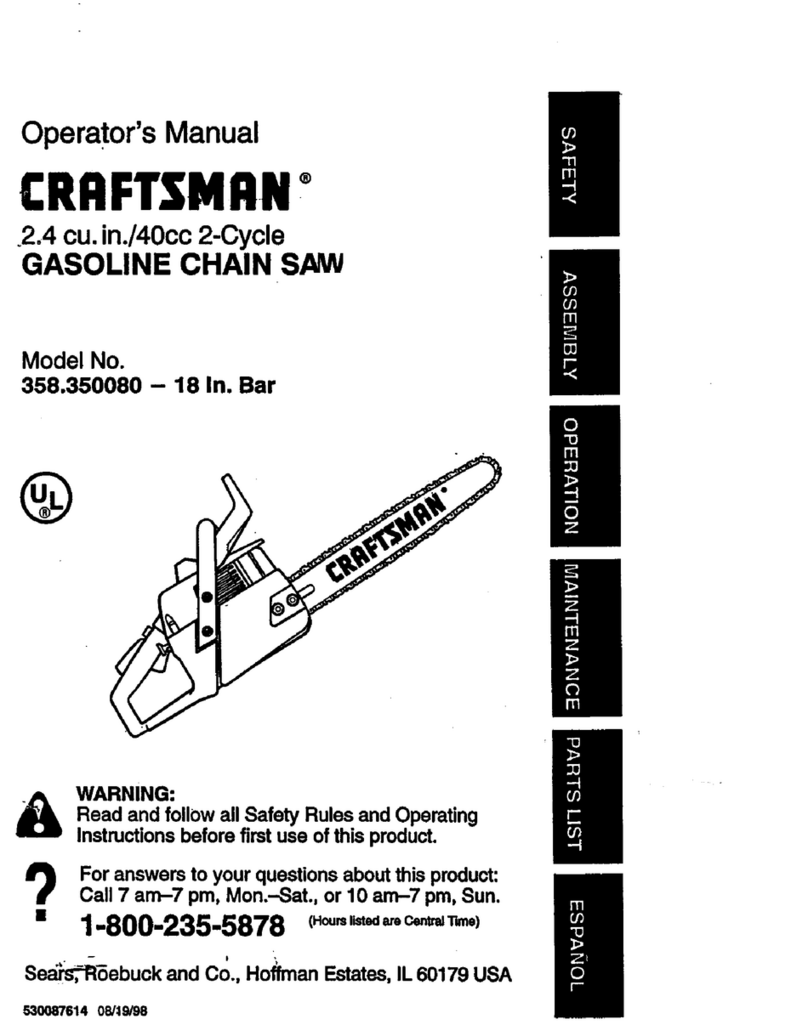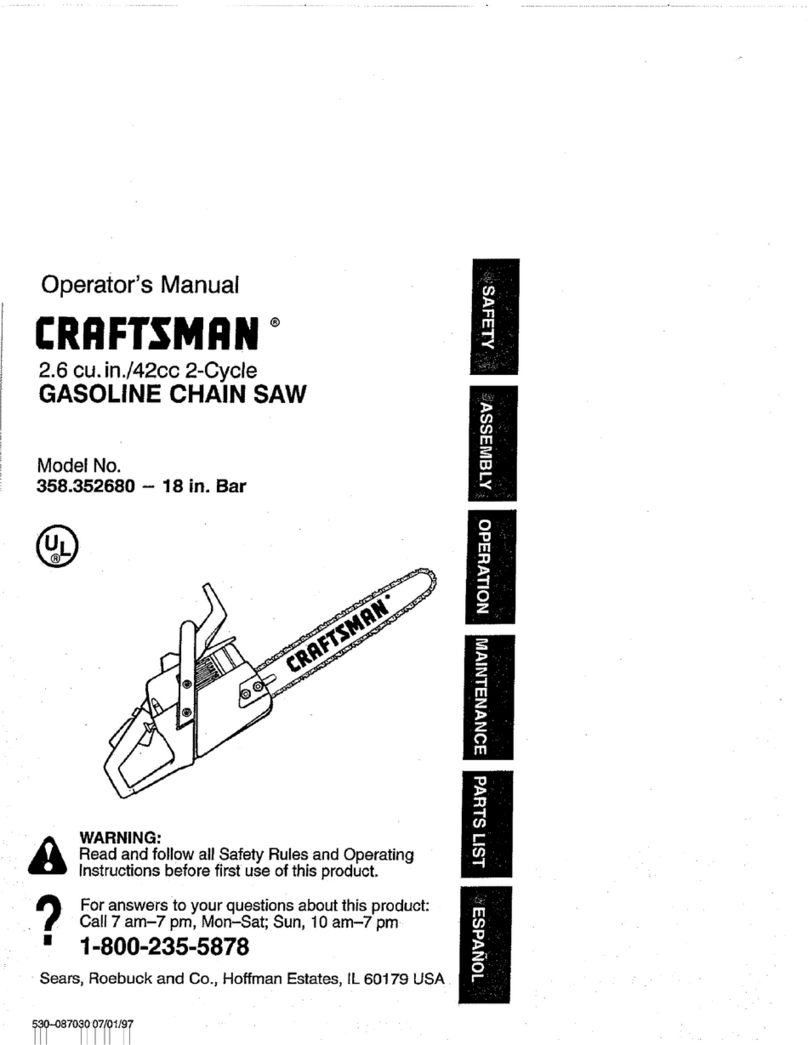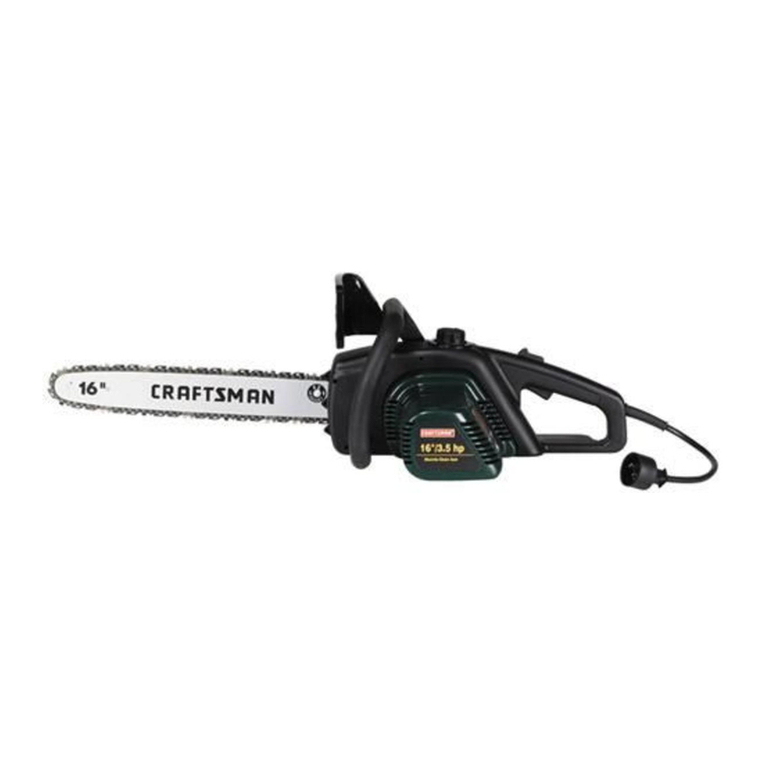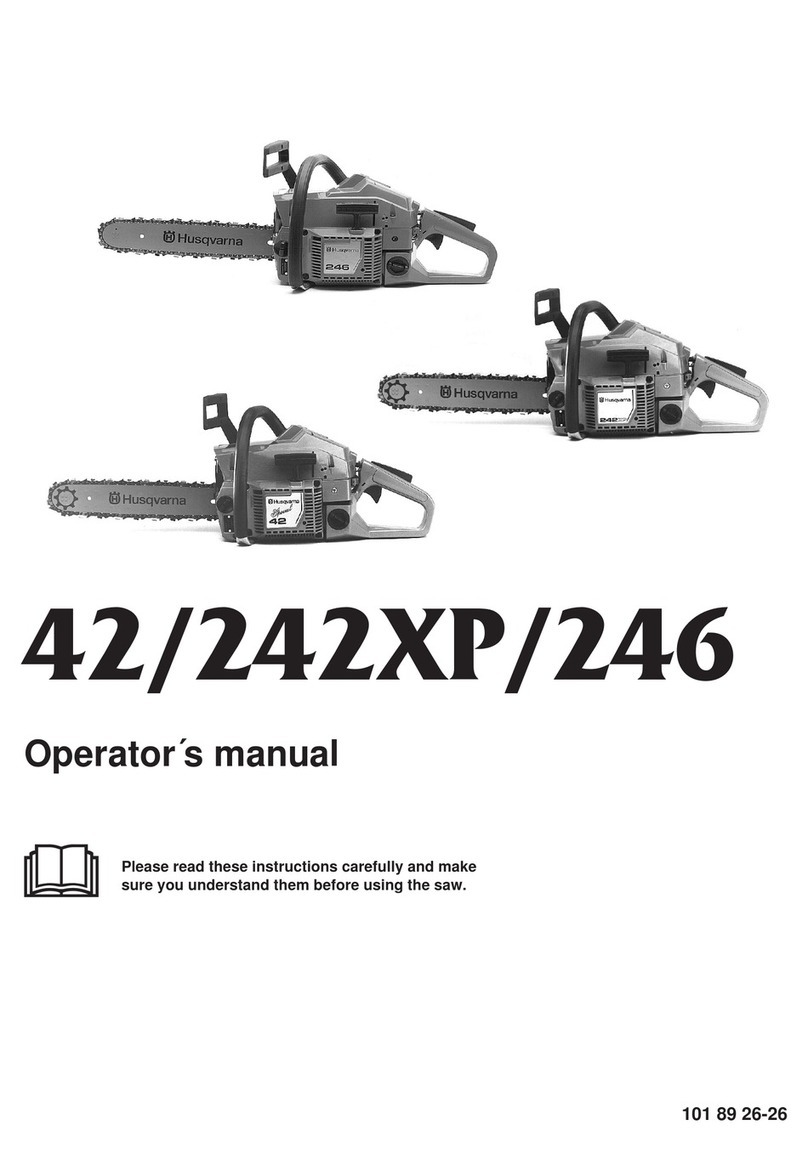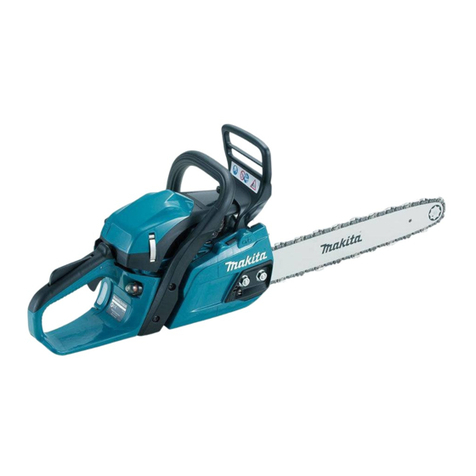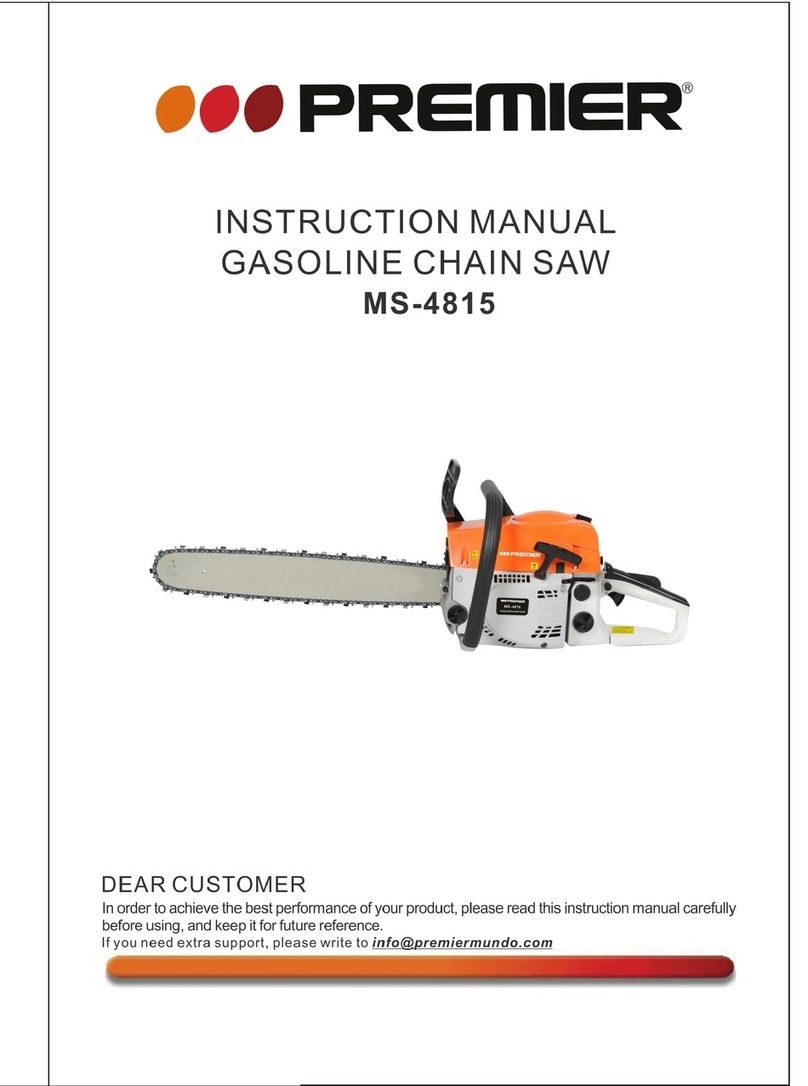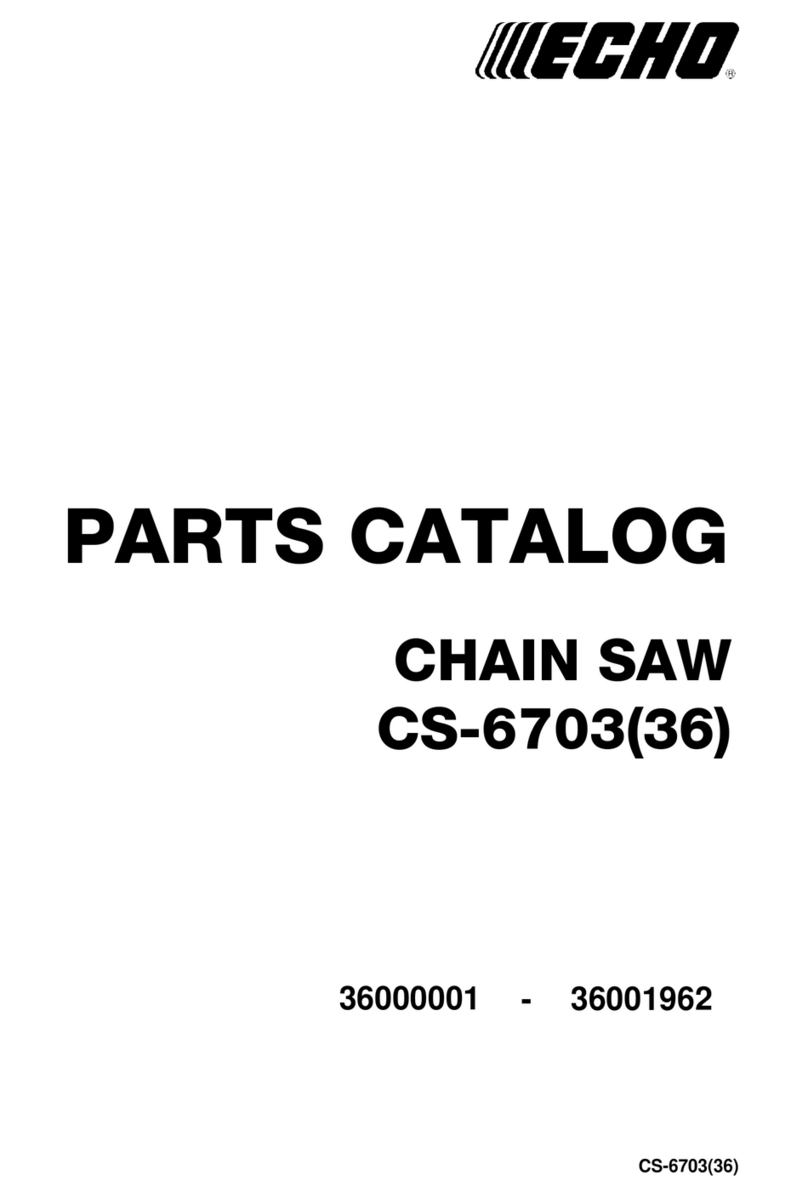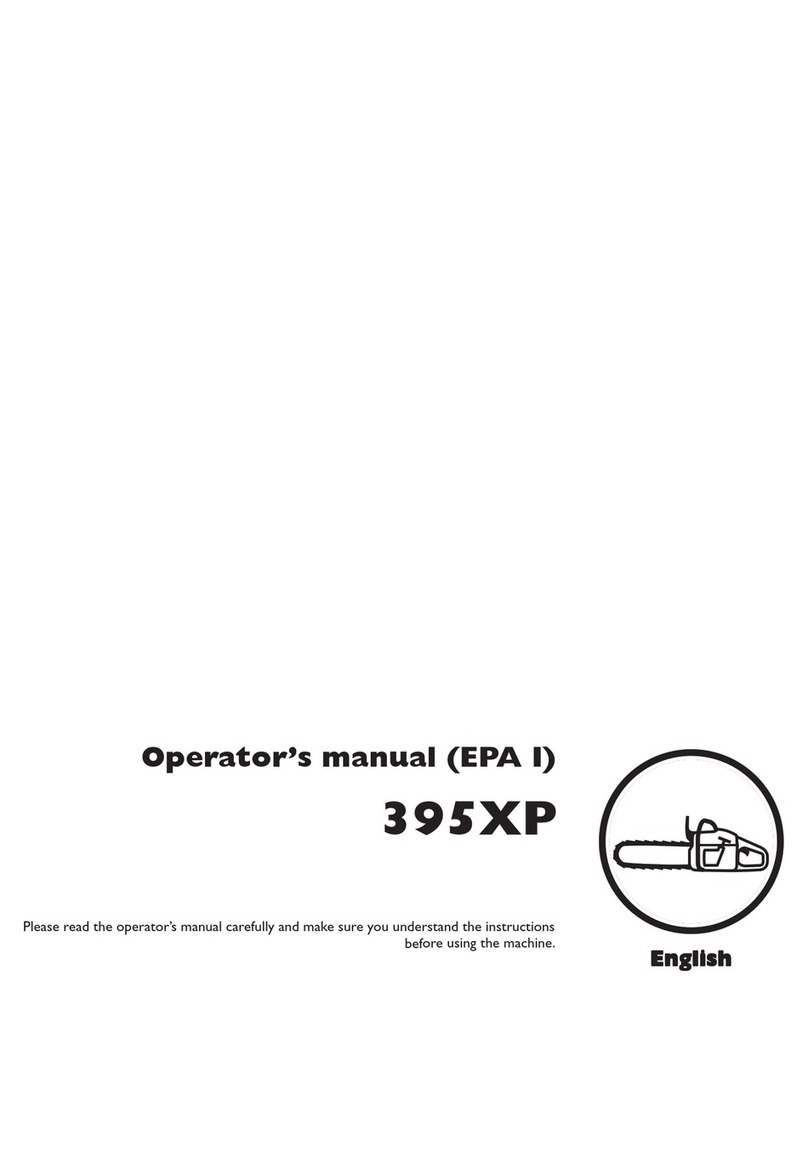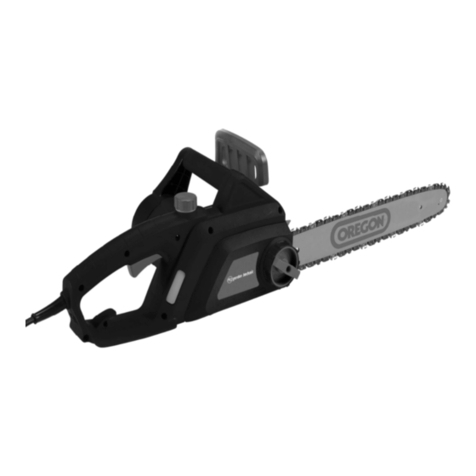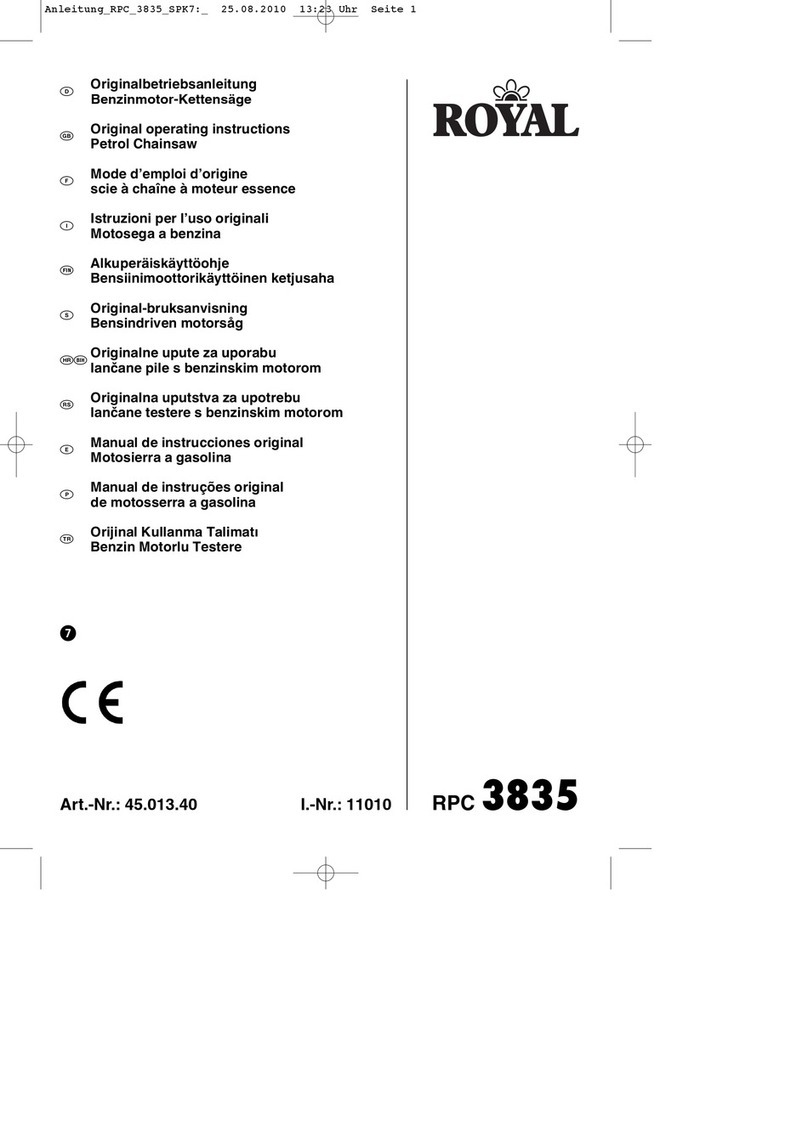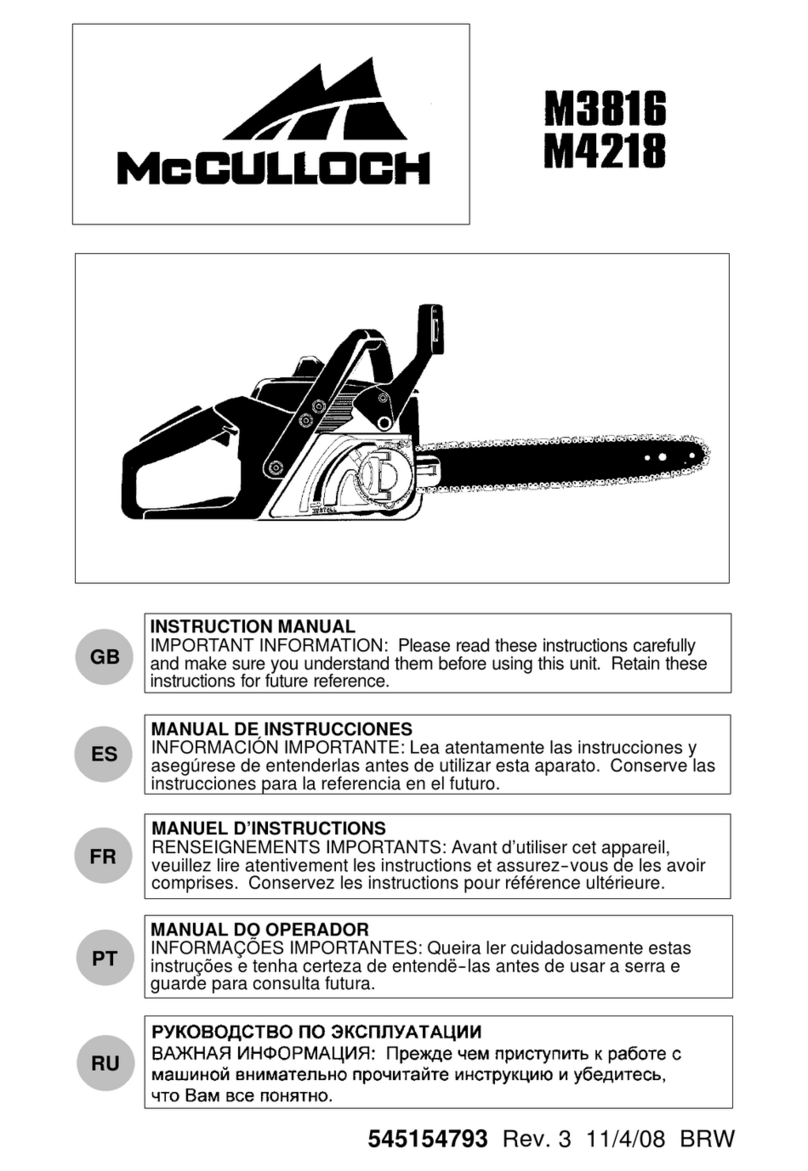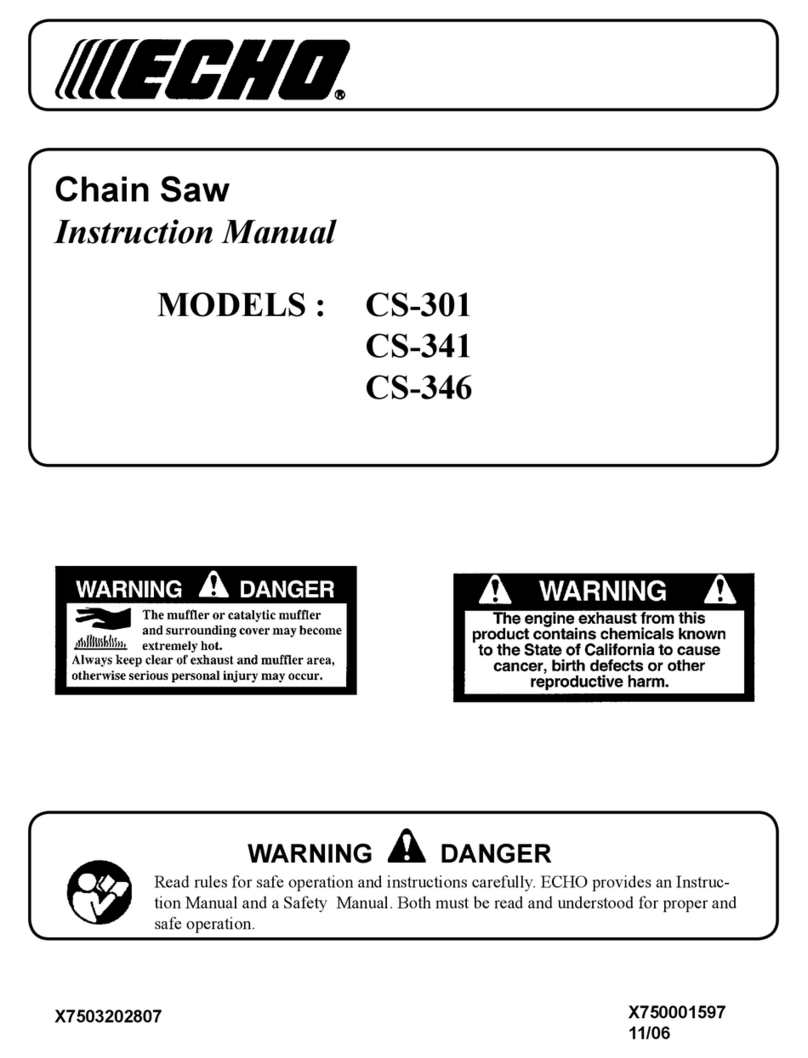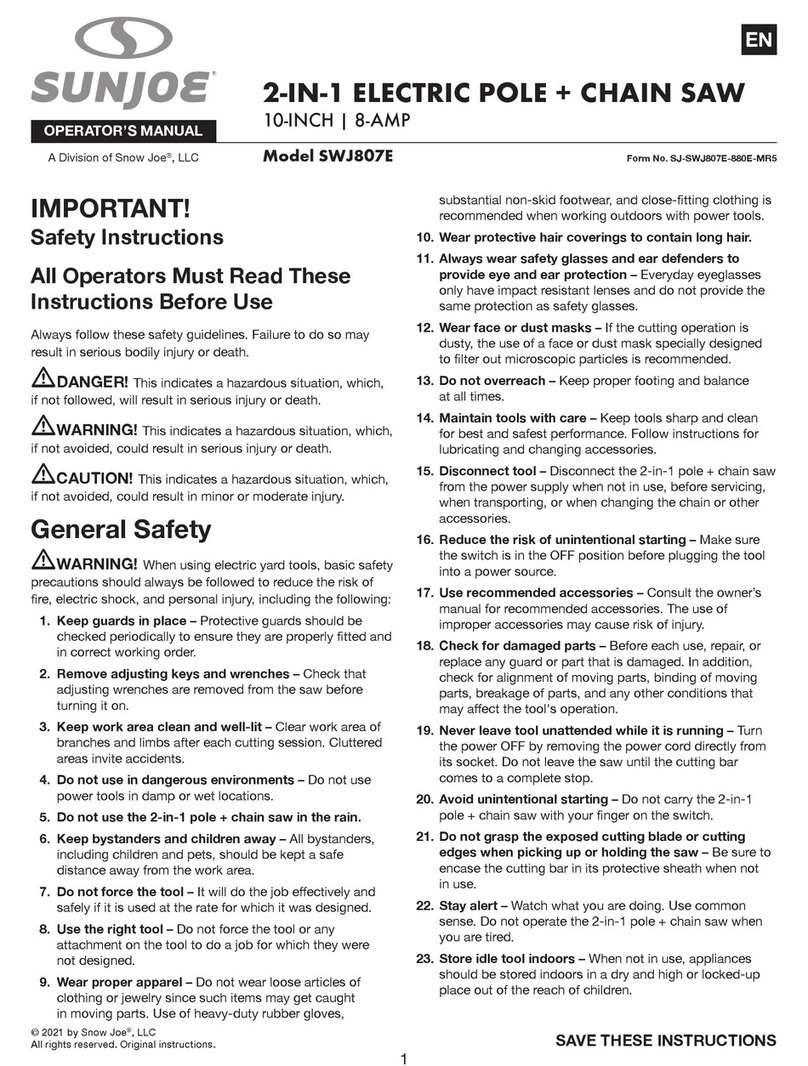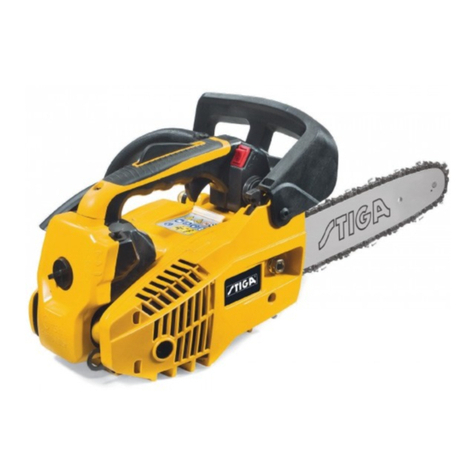mightbeaggravatedbystrenuous
work,checkwithdoctorbeforeoper-
ating.
• Donotstartcuttinguntilyouhavea
clearworkarea,securefooting,and,
ifyouarefellingtrees,aplannedre-
treatpath.
OPERATEYOURSAWSAFELY
• Donotoperateachainsawwithone
hand.Seriousinjurytotheoperator,
helpers,bystandersoranycombina-
tionofthesepersonsmayresultfrom
one-handedoperation.Achainsaw
isintendedfortwo-handeduse.
•Operatethechainsawonlyinawell-
ventilatedoutdoorarea.
• Donotoperatesawfromaladderor
inatree.
• Makesurethechainwillnotmake
contactwithanyobjectwhilestarting
theengine.Nevertrytostartthesaw
whentheguidebarisinacut.
• Donotputpressureonthesawat
theendofthecut.Applyingpressure
cancauseyoutolosecontrolwhen
thecutiscompleted.
•Stopenginebeforesettingsawdown.
• Handcarrysawonlywhenengineis
stopped.Carrywithmuffleraway
frombody;guidebar&chainproject-
ingbehindyou;guidebarpreferably
coveredwithascabbard.
• Donotoperateachainsawthatis
damaged,improperlyadjusted,or
notcompletelyandsecurelyas-
sembled.Alwaysreplacebar,chain,
handguard,orchainbrakeimmedi-
atelyifitbecomesdamaged,broken
orisotherwiseremoved.
MAINTAIN YOUR SAW IN GOOD
WORKING ORDER
,_WARNING: Disconnect the
spark plug before performing mainte-
nance except carburetor adjustments.
• Have all chain saw service performed
by a qualified service dealer with the
exception of the items listed in the
MAINTENANCE section of this manual.
• Make certain the saw chain stops
moving when the throttle trigger is
released. For correction, refer to
CARBURETOR ADJUSTMENT.
• Keep the handles dry, clean, and
free from oil or fuel mixture.
• Keep caps and fasteners securely
tightened.
• Nonconforming replacement compo-
nents or the removal of safety devices
may cause damage to the unit and
possible injury to the operator or by-
standers. Use only Craftsman acces-
sories and replacement parts as rec-
ommended. Never modify your saw.
• Maintain chain saw with care.
• Keep unit sharp and clean for better
and safer performance.
• Follow instructions for lubricating and
changing accessories.
• Check for damaged parts. Before fur-
ther use of the chain saw, a guard or
other part that is damaged should be
carefully checked to determine that it
will operate properly and perform its
intended function. Check for alignment
of moving parts, binding of moving
parts, breakage of parts, mounting and
any other conditions that may affect its
operation. A guard or other part that is
damaged should be properly repaired
or replaced by a Sears Service Center
unless otherwise indicated elsewhere
in the operator's manual.
• When not in use, chain saws should
be stored in a dry, high or locked-up
place out of the reach of children.
• When storing saw, use a scabbard or
carrying case.
HANDLE FUEL WITH CAUTION
• Do not smoke while handling fuel or
while operating the saw.
• Eliminate all sources of sparks or
flame in the areas where fuel is
mixed or poured.
• Mix and pour fuel in an outdoor area
and use an approved, marked con-
tainer for all fuel purposes. Wipe up
all fuel spills before starting saw.
• Move at least 10 feet (3 meters) from
fueling site before starting engine.
• Turn the engine off and let saw cool
in a non-combustible area, not on
dry leaves, straw, paper, etc. Slowly
remove fuel cap and refuel unit.
• Empty the fuel tank before storing or
transporting the unit. Use up fuel left in
the carburetor by starting the engine
and letting it run until itstops.
• Store the unit and fuel in an area
where fuel vapors cannot reach
sparks or open flames from water
heaters, electric motors or switches,
furnaces, etc.
GUARD AGAINST KICKBACK
Follow all safety rules to help avoid
kickback and other forces which can
result in serious injury.
